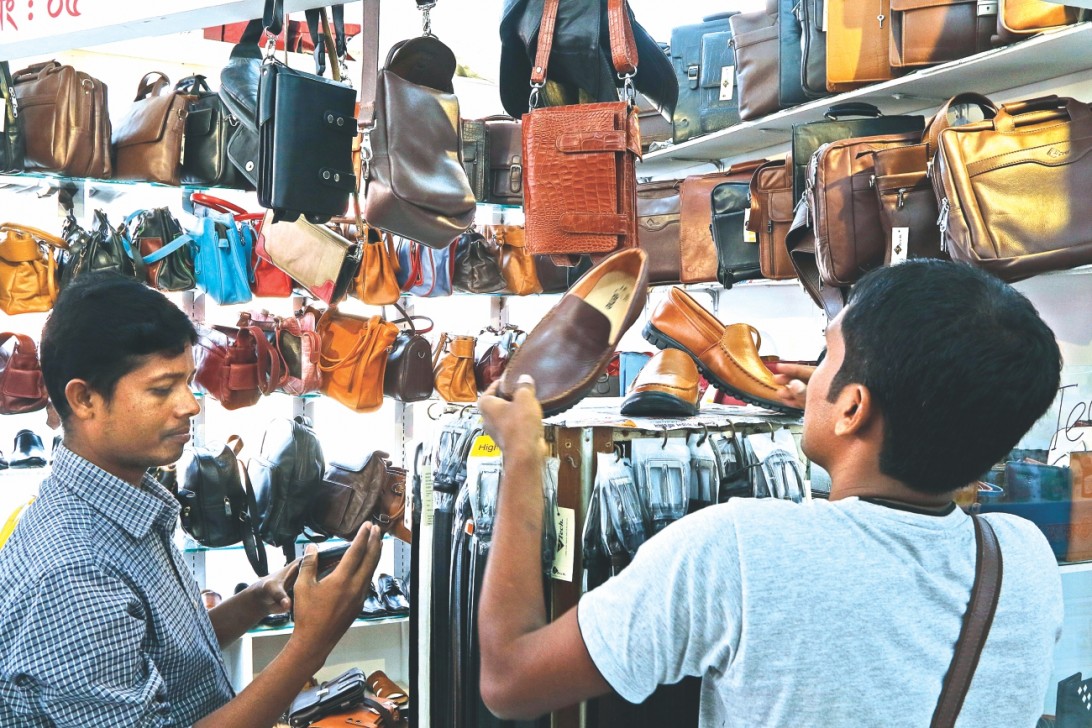Leather goods exports rebound

Export of leather and leather goods from Bangladesh rebounded strongly after more than two years thanks to higher shipments to non-traditional markets and the US-China trade war, exporters said.
Shipments in July amounted to $106.10 million, a 16.39 percent year-on-year growth, data of the Export Promotion Bureau (EPB) showed. This is the only sector after garments which fetched $1 billion last fiscal year.
It, however, had registered negative growth over the past two years or so because of a gradual shift of tanneries from Hazaribagh to a newly built Savar Tannery Industrial Estate.
Of the 155 tanneries that have relocated so far, 123 have gone into full or partial operation and the rest are in the process, according to tanners.
Tanners are the main suppliers of raw materials to manufacturers and exporters of leather goods like shoes and bags.
Value addition has recently increased a lot, said Saiful Islam, president of the Leathergoods and Footwear Manufacturers & Exporters Association of Bangladesh.
For instance, of last fiscal year’s $1.01 billion exports, 83 percent came from leather goods and the remaining from finished or tanned leather. Previously, it was vice versa, Islam told The Daily Star over the phone.
The performance has been very strong not only in traditional markets like that of the US, the European Union and Canada but also in non-traditional ones like that of Australia, Japan and Singapore, he said.
For instance, leading Australian brand Nimco has been sourcing in bulk quantities.
Moreover, the trade war’s benefits are spilling past the apparel sector, swaying a significant quantity of work orders from China as the production cost in Bangladesh is more competitive, Islam said.
Exporters also said winter shipments had started, inflating the export volume compared to that in other seasons.
Moreover, there will be a boom in work orders once certifications are attained from global rights body Labour Working Group (LWG) and the Savar estate’s central effluent treatment plant (CETP) becomes operational, said Islam.
Then local tanners will be able to generate adequate quantities of processed leather, reducing dependency on imports, he said.
The LWG certification is awarded to companies based on the points presented on factors such as solid waste management, treatment and less usage of water, chemical use and labour welfare, explained Md Shaheen Ahmed, chairman of the Bangladesh Tanners’ Association.
Out of 100 points, 85 brings gold certification, 75 silver and 65 bronze, he said.
Once the Savar estate becomes fully operational, including the CETP and dumping grounds, within the next one year, at least 65 points can be gained, allowing local tanners to get better prices, he added.
The absence of the certification is causing finished leather exporters to depend on a few Chinese companies not affiliated with the LWG, said Mohiuddin Ahmed Mahin, president of the Bangladesh Finished Leather, Leather Goods and Footwear Exporters Association.
Hence the prices they are getting are 25 percent lower, he said, adding that the authorities assured them that the CETP would become operational by December.
Ahmed was not that optimistic with July’s export growth, saying that getting the real scenario requires observing at least four months. He said only 20 out of 120 manufacturers have been performing strong.
Local tanners annually produce around 350 million square feet of leather, of which only 30 million square feet are consumed by local manufacturers, he said. Four million square feet of high-valued leather were imported for high-end products.
